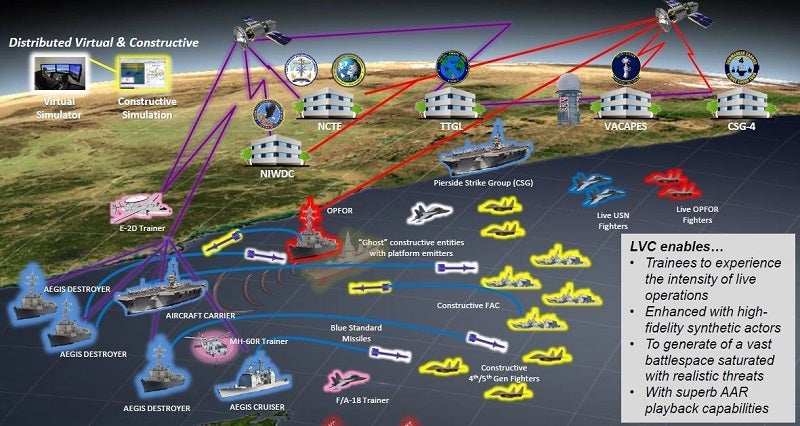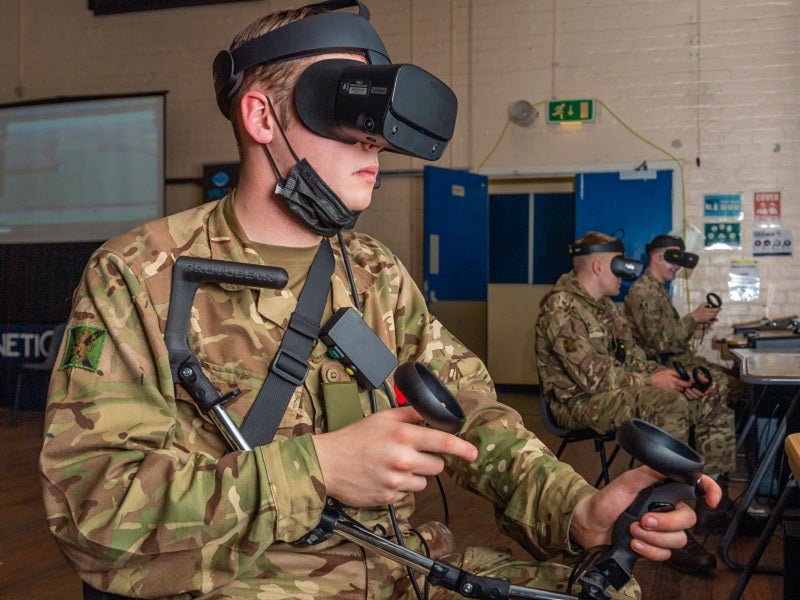The blur of physical and digital worlds is creating an ecosystem akin to a military metaverse that will invite closer collaboration. Nick Brown, Hadean marketing and business development director – Defence, Lee Shearer, PLEXSYS head of business development, UK, Europe and Middle East, and David Head, Thales’ head of strategic partnerships, examine how multi-domain training systems could impact the defence sector in the future.
Modern militaries are facing unprecedented threats in an evolving operating environment that demands constant readiness. The rise of hybrid warfare has pushed modern armed forces to re-evaluate the known thresholds of conflict while emerging domains, such as space and cyber, have created the necessity to develop advanced threads of military doctrine and requirements that give a new meaning to integrated combined arms operations.
More recently, the need to protect critical infrastructure has also been highlighted as millions of homes, businesses and services are affected by attacks on submarine gas pipelines and energy power plants as a result of war in eastern Europe. This has raised the importance of military preparedness and rapid, data-driven decision making for potential scenarios and their spillover effects beyond the battlefield.
All of this is set against a backdrop of macro technological trends that create new opportunity, as well as uncertainty and threat. Digital technologies increasingly augment and support our activity in the real world; how governments manage this blurring of the physical and virtual across ever more complex networks will be key to success or failure.
This is also applied to the user experience of soldiers, pilots and sailors who need a consistent, intuitive and accessible way to access information, support good and speedy decisions and prevent errors. The consequences of resource misallocation or navigation failure, for example, could be severe in a live operating environment. It is in these circumstances that we are starting to see the notion of a “military metaverse” emerge.
Isolated training environments
For the past 20 years, domain specific training simulations have given government and military leaders the ability to train for real-world situations and develop the skills and tactics best suited for positive outcomes to be accomplished. For example, fighter pilots are able to practice manoeuvres in training simulations that employ a combination of augmented reality, AI and interactive game engines.

US Tariffs are shifting - will you react or anticipate?
Don’t let policy changes catch you off guard. Stay proactive with real-time data and expert analysis.
By GlobalDataHowever, while the physical world continues to become ever more complex, the technical limitations of legacy computation infrastructure have, up to now, placed a hard cap on what can be achieved with live, virtual and constructive (LVC) simulators. While the benefits of immersive and impactful simulations for helping train soldiers, sailors and pilots are immense, current systems are built and used in isolation from each other, limiting their potential for increased scale, connectivity and interoperability.
With no real-time synchronisation, synthetic training is unable to reflect the intricacies of today’s complex operating environment where action across military domains takes place simultaneously.

Short of the computational power needed to cut through an influx of data and information, the fragmented synthetic trainers are also restricted in their ability to dynamically feed data for analytics and decision support. As a result, large scale, expensive and logistically complex field exercises are employed to make up for the lack of multi-domain single synthetic training.
The convergence of the virtual and physical
It is no longer acceptable for these exercises to take place in isolation. The world is shifting and the old adage “adapt or die” springs to mind; continuing down a siloed approach will only create barriers to collaboration and limit that ability of the military to effectively deliver joint exercises and training; training that truly supports multi-domain integration.
Turning towards more decentralised technical frameworks will allow us to bring ideas, data and simulations under one roof. The idea of a military metaverse is abstract but serves as a descriptor that encapsulates the ecosystem of technologies that allow us to bring together disparate domains and activities into a single virtual space. Single synthetic environments are amongst the first instances of this technology being incorporated into military parlance. These federated training simulations allow for better collaboration and communication across domains and even heterogenous organisations such as NATO.
A shift in military training doctrine
Consequently, military and government leaders have been seeking to form military-wide cohesion around a core pillar of digital technologies that can help to achieve preparedness and optimisation in operations, from training and wargaming to live data analysis and decision support. The vision for the use of synthetic environments in modern militaries has escalated from domain and scenario specific simulations to a blend of LVC training that will allow actors from various domains to train and collaborate jointly at all classifications in a single comprehensive and high-fidelity synthetic environment.
One doesn’t have to look far to realise that the armed forces are aware of the need for this collaborative pathway. Demonstrating a future-facing approach, ambitious programmes are being developed to harness the opportunities of scalable and integrated physical/virtual blended environments and provide realistic and repeatable training.
It’s clear that the platform technologies and applications that are underpinning online gaming and the metaverse are the very same that will usher in the next level of military superiority
In the UK, programmes like the Defence Operational Training Capability (Maritime) and the Maritime Command and Staff Trainer are focused on enabling the interoperability of simulations to link ship and shore-based system and modernise the delivery of Royal Navy training. The Royal Air Force Gladiator programme is another endeavour that is seeking to upgrade the fidelity and complexity of pilot training by networking simulators accommodated in different locations to multiply the training effect and accelerate force preparation.
In the land domain, the Collective Training Transformation Programme is transforming how soldiers train together by federating systems to incorporate multi-domain warfare, echo real world scenarios with high fidelity and enable the exploitation of data capture in accordance with the Ministry of Defence’s broader focus on data-driven training and decision making.
The way forward
Achieving integration between systems presents a data management and distribution challenge with different systems requiring complex consolidation. A vast amount of computational power is essential, first; to manage the massive number and size of interacting entities and second; to navigate the intricate networking that comes with converging multiple data points from diverse locations. While still in an experimental phase, all of these high performing training interventions, and others to come which will be used to form a fully embodied military metaverse, will only be supplied through the combined power of distributed cloud computing, high quality multi-domain simulations and AI technology.
The concept of a viable, immersive and high-performance military metaverse will drive collaboration. The complexity of the technical challenges, the requirement to deliver solutions that will future-proof the armed services and ensure that competitive advantage ahead of adversaries is maintained will require a joined-together approach. There will need to be a conglomeration between commercial companies, academia and militaries all working together within ecosystems of interoperable technologies.
Where is the future of defence training heading towards?
The metaverse, which we define here as a space in which the physical and digital worlds interplay to augment our understanding and experience of the real world, will, in the near future, have a very real influence on civilian life and the ways we communicate, learn, socialise and structure our economies. The military will need to shift its thinking to align with the advancements that Web 3.0 is bringing.
It’s clear that the platform technologies and applications that are underpinning online gaming and the metaverse are the very same that will usher in the next level of military superiority, driving innovation at a pace that will meet the needs of rapidly changing global conditions. There is a nexus between the worlds of defence and the metaverse because future generations will already be familiar with these platforms and the troops of tomorrow will expect to be trained in multi-layered and multi-disciplinary single synthetic environments.




